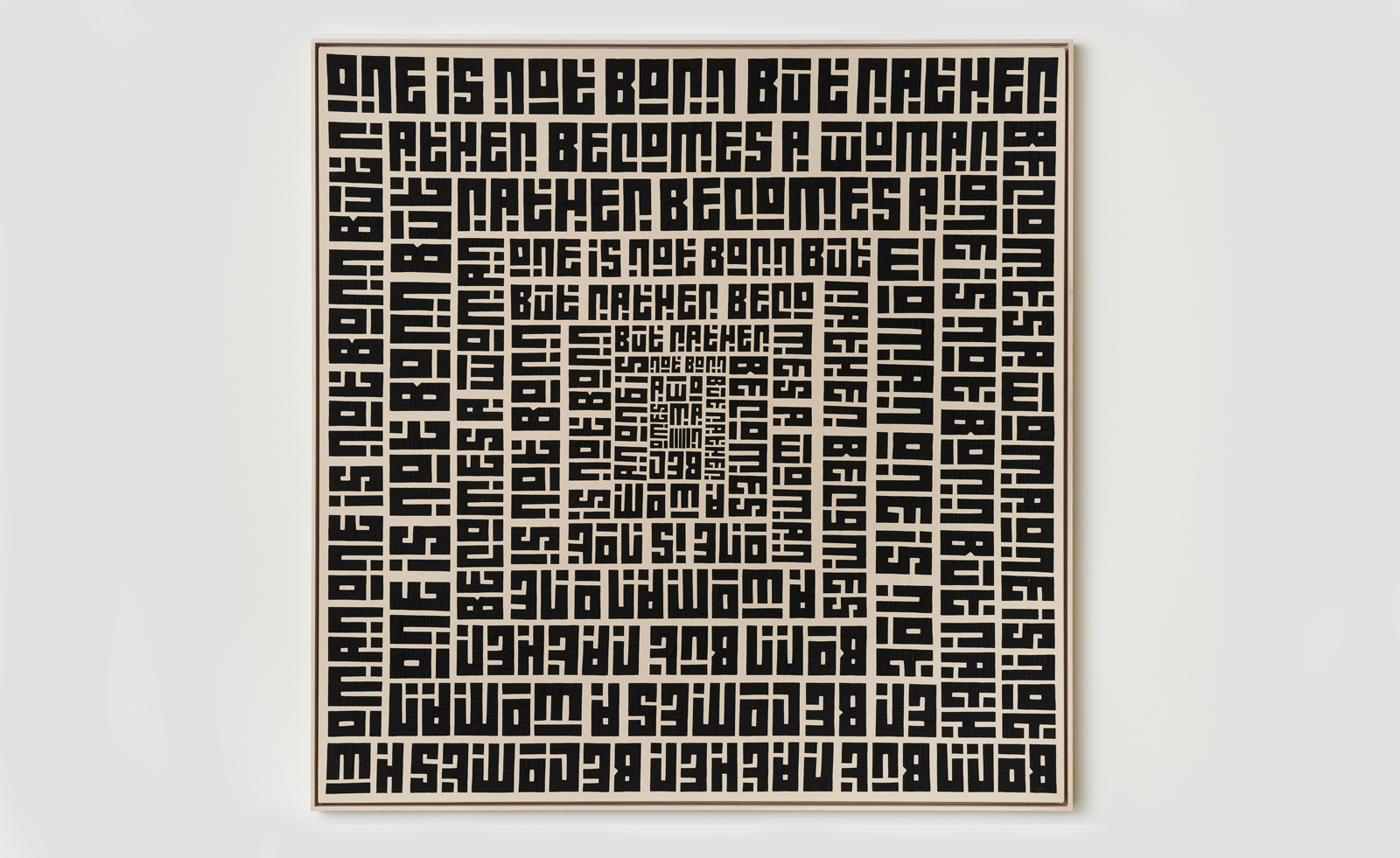
Ghada Amer uses words in provocative ways. What appears to be decorative needlework at first glance, is anything but. Working with woven and embroidered text, often powerful feminist statements across languages and time, rearranged into intriguing geometric forms, the artist invites us to see the common threads in our shared realities. Amer’s message is both clear and coded, requiring a second or third glance. She uses language to stir debate and shift our perspectives.
‘I grew up with calligraphy,’ she says. ‘It is something you see at first, then you discover more. The beauty is in the discovery when things reveal to you. I see it as a kind of meditation. It isn’t a message or a trick, rather a state of how you want a work of art to respond to you.’
Ghada Amer, ‘QR Codes Revisited – London’
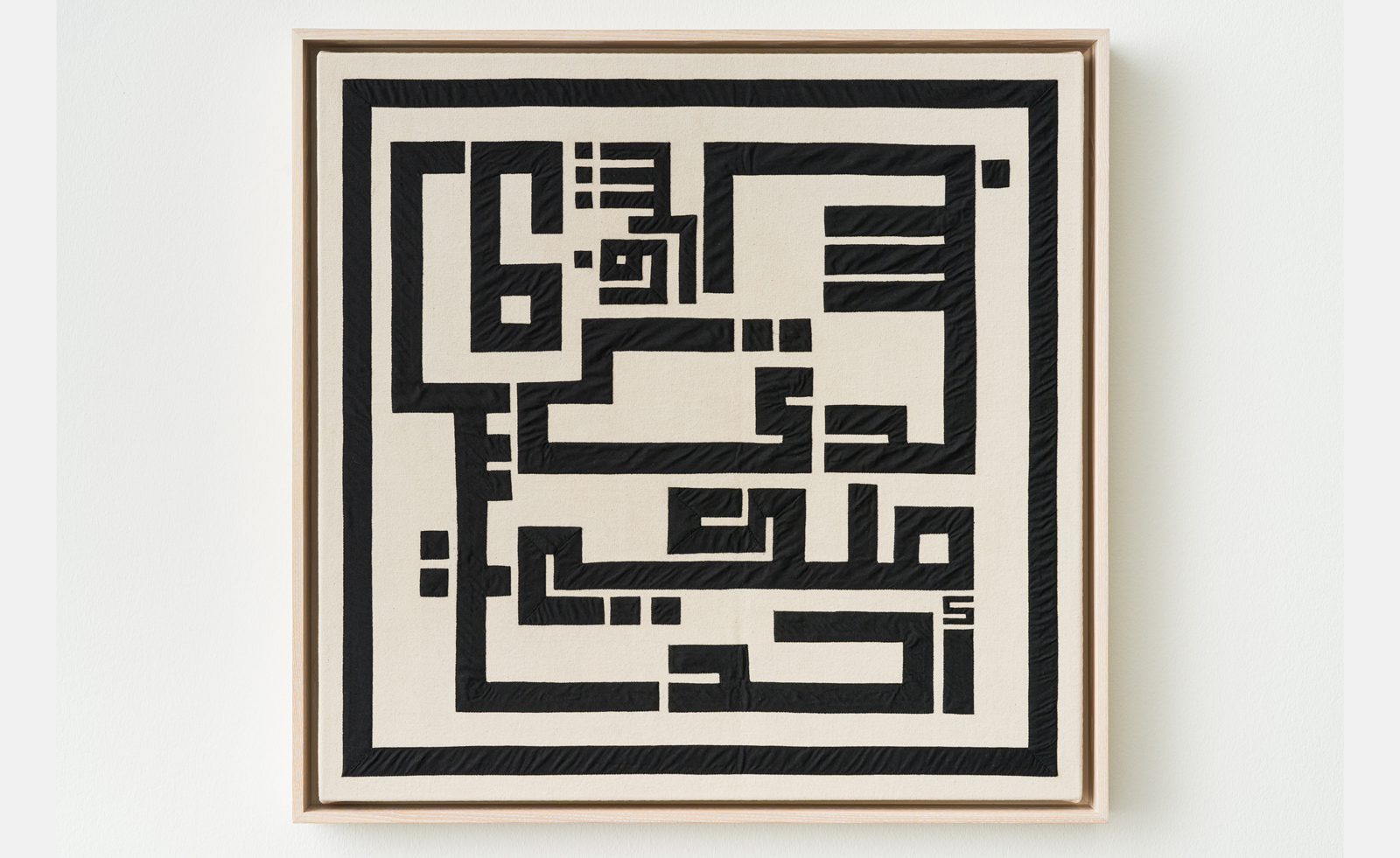
We are meeting at Goodman Gallery in Mayfair where ‘QR Codes Revisited – London’ has just opened featuring Amer’s early and new works. This includes her most recent abstract appliqués, which the artist painstakingly created with master craftsmen in Egypt. ‘I like the idea of a super ancient technique and a very modern concept,’ she offers, with a smile.
Occupying the entire downstairs gallery space, these large-scale works highlight the voices of French feminists, Arab activists and South African revolutionaries. Simone de Beauvoir’s ‘One is not born, but rather becomes, a woman’ appears, as does the powerful words of Tunisian women’s rights activist Amina Sboui, who writes, ‘My body belongs to me and it does not represent the honour of anyone’. Meanwhile, the geometric formations and embedded coded meanings reference the QR code of the exhibition title.
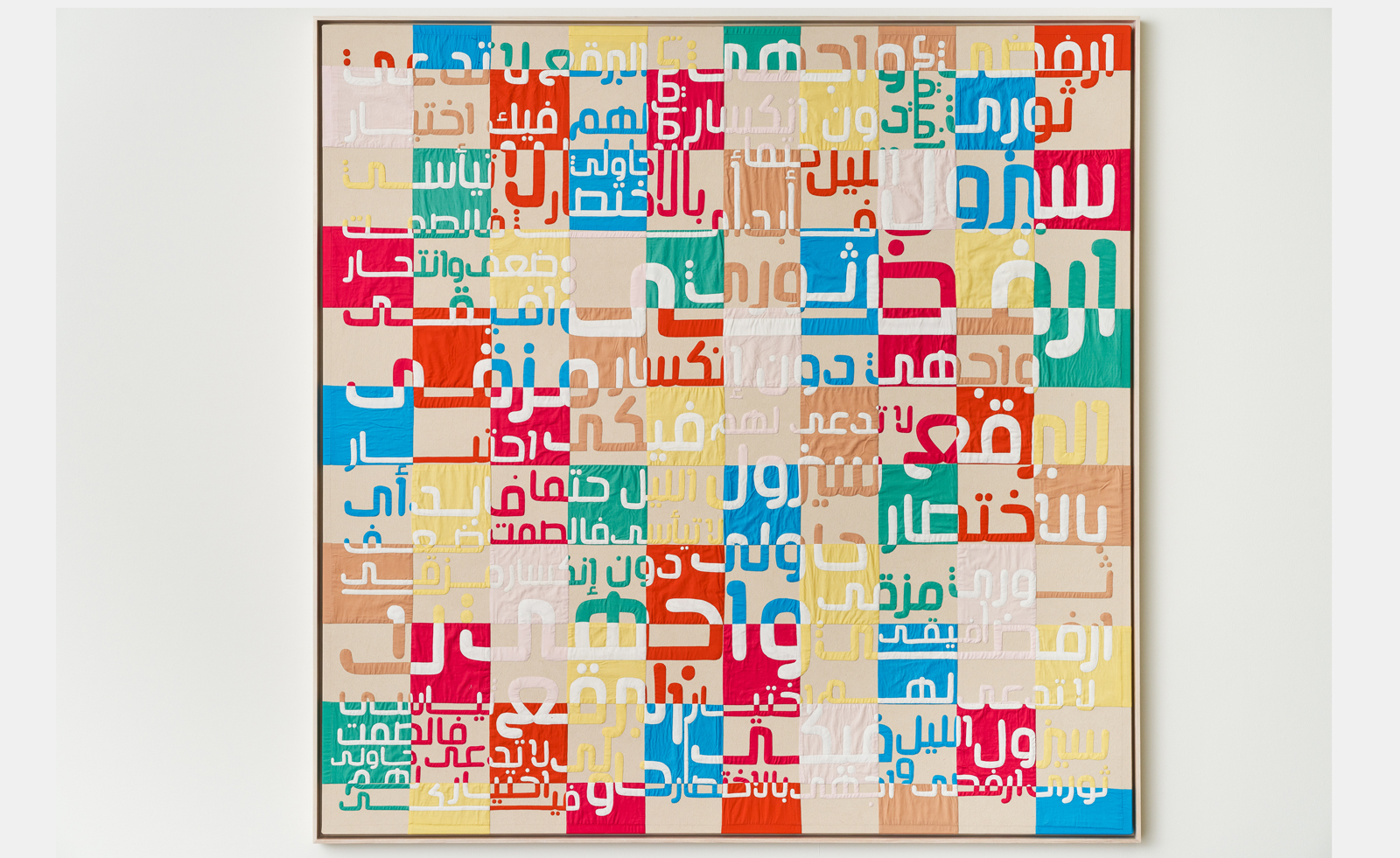
Born 1963 in Cairo and based in New York, Amer has gained international recognition for her abstract canvases that are embroidered with feminist and erotic motifs. Her extensive practice involves painting, sculpture and ceramics, works on paper, and mixed-media installations. Her work is featured in public collections around the world, including Brooklyn Museum of Art and Centre Georges Pompidou in Paris.
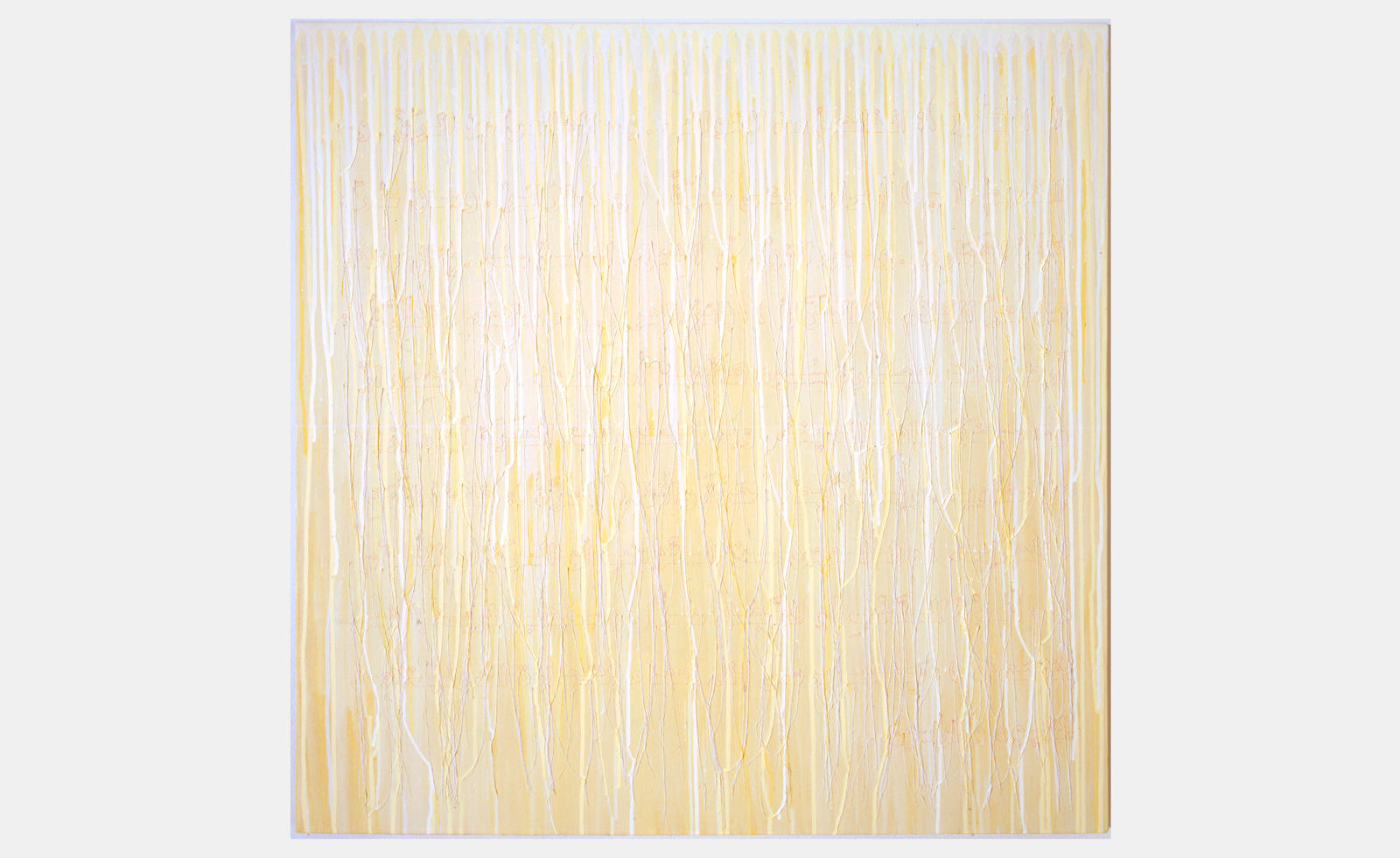
Amer was encouraged to take up craft, rather than the more masculine-deemed painting at the start of her career, which she did so with gusto. ‘I wanted to subvert the medium. I see these works as paintings.’
The emphasis on words with social and political subtexts came early in her career. In one of her most celebrated embroidered wall sculptures, Barbie Loves Ken, Ken Loves Barbie’(1995/2002), on show for the first time in the UK at Goodman, two life-size straitjackets pin to the wall stitched with ‘Ken aime Barbie, Barbie aime Ken’ as an observation of our fixation with perfect love and the impossible beauty standards. Amer acknowledges since the 2010 Arab Spring pro-democracy uprising, her work has focused more and more on addressing the Arab feminist movement; she says, ‘They are with me now, so I don’t feel alone.’
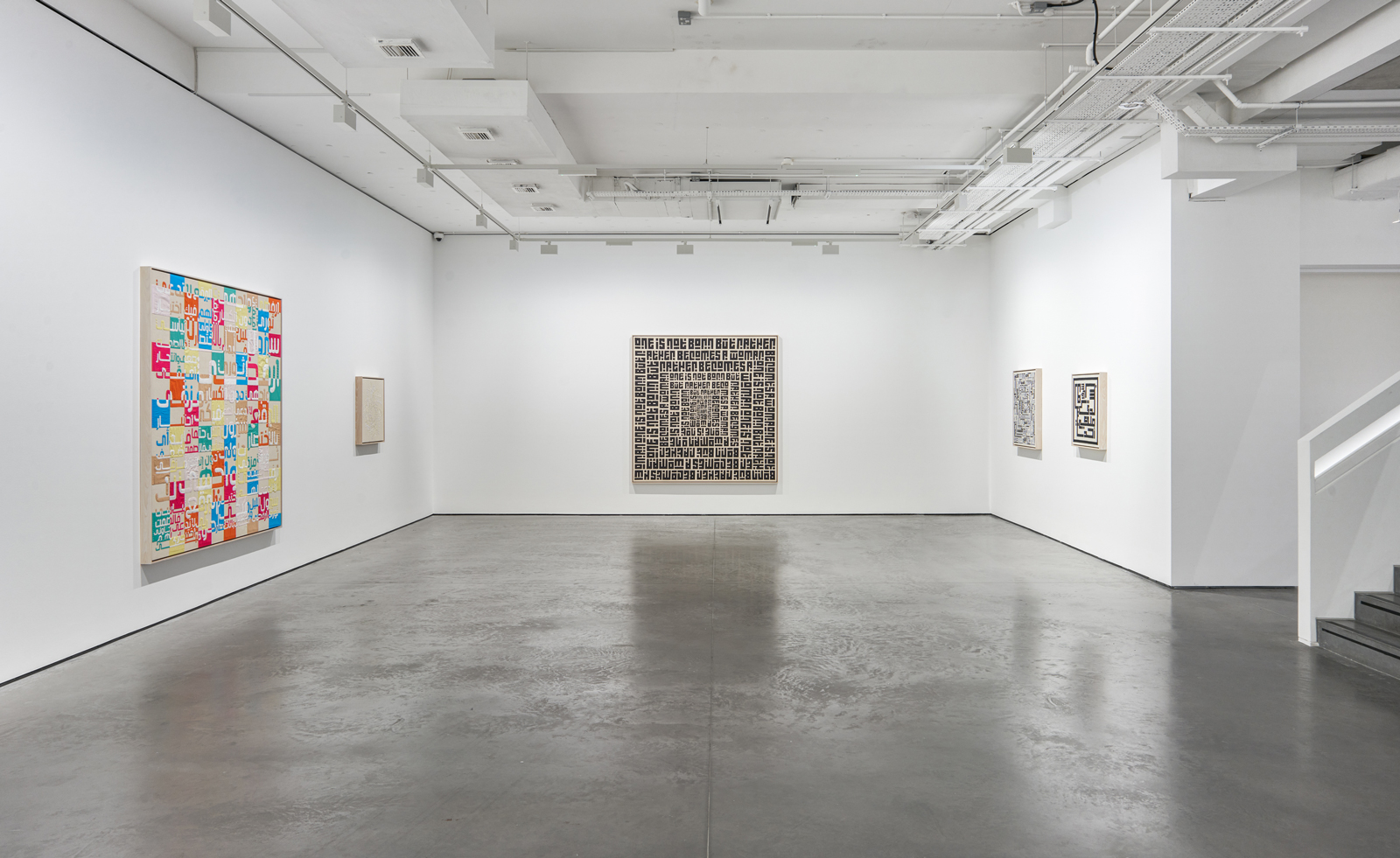
Amer abstracts language and unpacks definitions. She lingers on words, translations and mistranslations and their wider impact on how we view others. The maze-like quality of ‘QR Code Revisited’ asks the viewer to adventure into places unseen, explore other narratives. Ultimately Amer finds in words the force to capture shared identities, commonalities across cultures, humanity without borders.
She describes her latest body of work as changing what is considered submissive work to be seen and understood as paintings. ‘I’ve been developing my vocabulary for 25 years. Since the past five years, I can finally talk. Putting embroidery in the format of painting and art, I didn’t have anybody to learn from. I had to create my own history. Only now I can really master it.’
‘QR Codes Revisited – London’ is at Goodman Gallery until 22 December 2023







